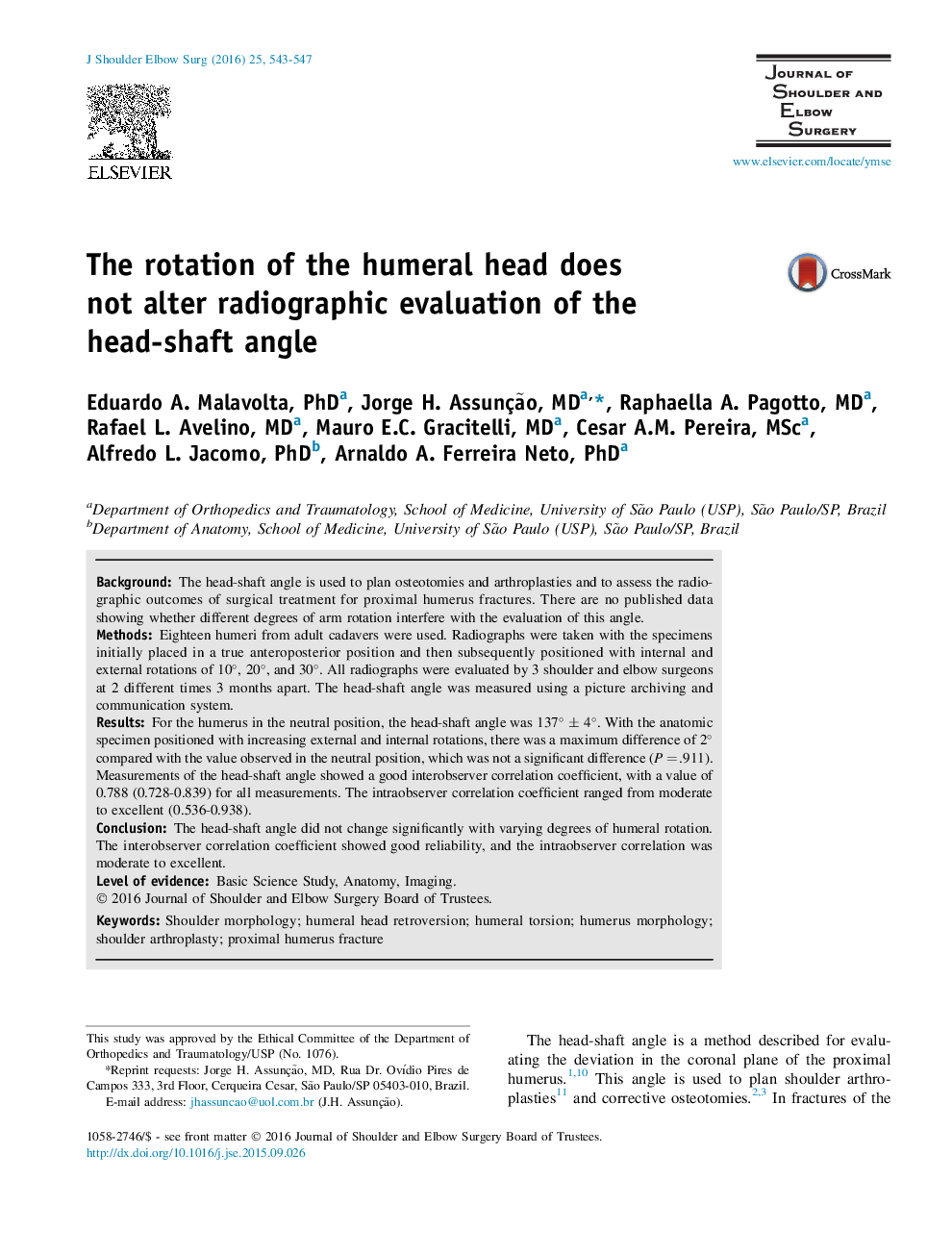| Article ID | Journal | Published Year | Pages | File Type |
|---|---|---|---|---|
| 4073121 | Journal of Shoulder and Elbow Surgery | 2016 | 5 Pages |
BackgroundThe head-shaft angle is used to plan osteotomies and arthroplasties and to assess the radiographic outcomes of surgical treatment for proximal humerus fractures. There are no published data showing whether different degrees of arm rotation interfere with the evaluation of this angle.MethodsEighteen humeri from adult cadavers were used. Radiographs were taken with the specimens initially placed in a true anteroposterior position and then subsequently positioned with internal and external rotations of 10°, 20°, and 30°. All radiographs were evaluated by 3 shoulder and elbow surgeons at 2 different times 3 months apart. The head-shaft angle was measured using a picture archiving and communication system.ResultsFor the humerus in the neutral position, the head-shaft angle was 137° ± 4°. With the anatomic specimen positioned with increasing external and internal rotations, there was a maximum difference of 2° compared with the value observed in the neutral position, which was not a significant difference (P = .911). Measurements of the head-shaft angle showed a good interobserver correlation coefficient, with a value of 0.788 (0.728-0.839) for all measurements. The intraobserver correlation coefficient ranged from moderate to excellent (0.536-0.938).ConclusionThe head-shaft angle did not change significantly with varying degrees of humeral rotation. The interobserver correlation coefficient showed good reliability, and the intraobserver correlation was moderate to excellent.
